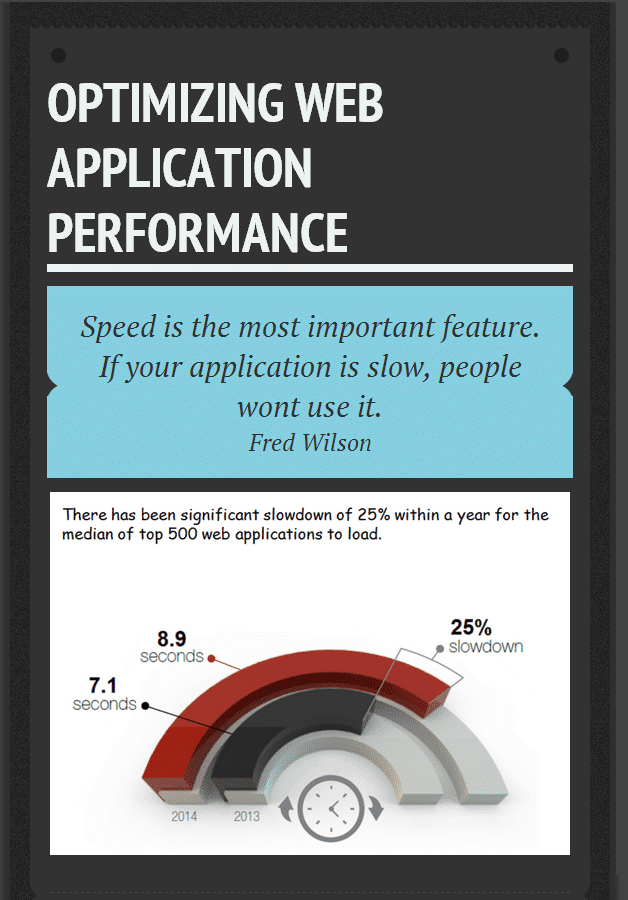Web applications have taken over a new face with the growing interactivity of man and machine via internet. The 2.0 rules the domain completely which does not let you have delay even of few milliseconds which could affect the entire success story of the company (pun intended). According to the reports the 1 second delay loss equals about
- 7% in conversations
- 11% in page views
- 16% in customer satisfaction
Well this delay could be because of many parameters, maybe the voluminous content, bandwidth and other connectivity problem and most of as all the loading time. In the cut throat competition nobody will bear any slowdown in the response time of their application. So optimizing web application in terms of fueling its speed and efficiency is taking a prime role in the product development today. Many companies fall into prey of “guaranteed solutions” for optimizing your application after making it. But application performance is not a second thought and will never be. You need to work on it right from the initial stage.
Here are some handy ways in which you could optimize the performance of your web application
Code that runs fast
There are various issues that may strike during the development like configuration, integration or network problems. The mote among the various reasons could be disturbance in code. Care taken could get all the unnecessary sections out and make it infallible.
Test the performance
Testing the left out spaces and drawbacks in the application in the development stage will be good for detecting the unpredictability situations.
String the beads together
If you have a lot of graphic content then it is always good to bundle up all the common images into common file which would help to save the amount of request that you will be sending.
Create customer’s bubble
The specific hardware and connectivity used by your concerned user would not be always the top level oriented. Often the desired response rate is dwindled when the application is in the hands of the user owing to maybe slower connectivity or different and smaller device version. One should consider the performance of the application in the worst case to get the optimum performance.
Keep the minimum external references
When you have a fewer number of external references and the currently present references placed in the most appropriate location preferably at the base so that your page could load first saving milliseconds as they count too!
Study and optimize algorithm
Often the flow of the code takes the toll over the application rendering it slower and inefficient. Continuous patrolling through the flow and altering it whenever needed would save up from any trouble.
Successor version is not the solution
Often the forthcoming versions of the application will help to redress the problems present now is a wrong myth amongst many. Often many traps and pitfalls seep into and we are back to square one. Instead of being in this delusional thought process clear the mess in the older version so that you do not deal with it in future.
Catch cache
Instead of calling back data that is been repetitive all over the code it is always better to go about caching look up data. This will help to save the cost of cashing pages with dynamic data always.
Suitable server will serve well
If your application does not get a server that optimizes the best way to use memory then you are already losing battle before even going on the field. Choosing the optimum server will not just help save memory but also improvise the performance gains. Cut the cake and have it too!
Do not fall in the blame game
It is often easy to throw the entire blame on the technology and platform that is been used. But, we are generally in the position to solve it by leveraging some changes in the environment. It would be more profitable rather than finding faults.
These are few of the many techniques that you could consider to change the landscape to provide new and fancy user experiences with enhanced performance. The bottom line is to dig out all the pitfalls in the application and tune them for optimized performance delivery.

